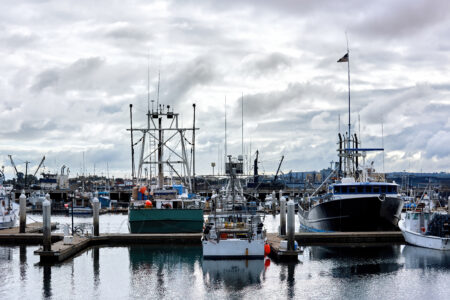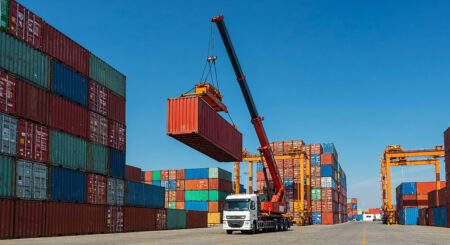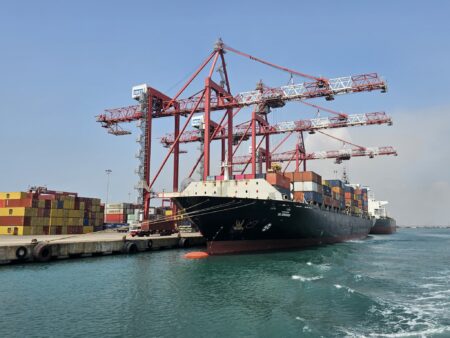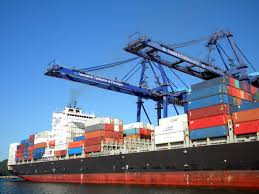At LISW, Core Power’s Mikal Bøe touts nuclear reactors as shipping’s clean energy future.
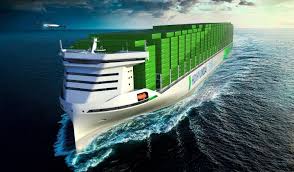
As the global shipping industry wrestles with the complex task of cutting carbon emissions, a bold and once-taboo solution is resurfacing; nuclear power for commercial ships. At this year’s London International Shipping Week (LISW), industry veteran and nuclear advocate Mikal Bøe, Chairman and CEO of Core Power, urged shipowners to take a serious look at small modular reactors (SMRs) as the industry’s green fuel agenda runs into headwinds.
Bøe, who has been a consistent voice in promoting nuclear technology for maritime use, spoke with renewed optimism. The reason? Shipping’s slow adoption of alternative fuels like green ammonia and methanol and a growing backlash, particularly in the US, against the high costs, operational compromises, and infrastructure demands of these e-fuels.
“Alternative electro-fuels will cause ships to go slower, carry less cargo, and cost more money,” Bøe said. “There is a deep conflict between sustainability goals and commercial viability. Nuclear can bridge that gap.”
Why Nuclear is Back on the Table
Shipping is traditionally conservative, with owners reluctant to bet on untested technologies. Yet, nuclear reactors promise benefits that other fuels struggle to match:
- No bunkering needed: Nuclear-powered ships would not depend on universal refueling hubs.
- Energy self-sufficiency: Ships would generate their own power; always on, uninterrupted.
- Extra utility: While docked, ships could even supply power to ports during cargo operations.
- Commercial edge: With no need to bunker, operators could speed up voyages and grab market share.
A Short but Notable History
Nuclear-powered merchant vessels are not entirely new but have a patchy history. Only four were ever built:
- NS Savannah (1960s, US cargo/passenger ship)
- Mutsu (1969, Japan, general cargo)
- Otto Hahn (1979, Germany, research ship)
- Sevmorput (1988, Russia, LASH carrier)
Most were eventually withdrawn due to cost, safety concerns, and regulatory hurdles. The Sevmorput was laid up earlier in 2025.
The SMR Revolution
What makes today different is technology. Unlike the bulky and costly reactors of the past, modern Small Modular Reactors (SMRs) are designed for commercial viability:
- Factory-built, not megaprojects: SMRs can be produced at scale, with a unit potentially rolling out of a factory every ten days.
- Cost advantages: Instead of $50 billion for a gigawatt-scale nuclear plant taking 20–25 years, SMRs offer faster deployment and lower costs.
- Lower crew requirements: Modern designs are self-regulating and need fewer nuclear technicians, reducing operational risks.
“Instead of massive civil construction projects, this is now a product,” Bøe stressed. “This is something we can have tomorrow.”
China Leading the Charge
A recent design from China, the KUN-24AP, illustrates the scale of ambitions. The nuclear-powered container vessel boasts 24,000 TEU capacity and a streamlined design with a forward-mounted bridge, clearly built for speed and efficiency.
Such concepts highlight how nuclear propulsion could offer not only environmental compliance but also a competitive commercial edge.
The Decarbonisation Dilemma
The debate comes at a time when shipping’s decarbonisation roadmap faces turbulence:
- E-fuels like ammonia and methanol demand massive new infrastructure, slow ships down, and reduce cargo space.
- Carbon compliance rules from the IMO are pushing operators to make urgent choices.
- Investment hesitancy is stalling progress, as many owners remain unconvinced about current green fuel pathways.
In this climate, nuclear is re-emerging as a serious option; not just an academic debate.
Looking Ahead
For now, nuclear propulsion in shipping remains controversial, with regulatory, safety, and public acceptance challenges still unresolved. But with modern SMRs reshaping the economics and geopolitics of nuclear power, advocates like Bøe believe the technology’s time has finally come.
“The technologies we used in navies are not fit for commercial shipping,” Bøe concluded. “We need new solutions. Nuclear can deliver clean, reliable, and competitive power for the next generation of global trade.”
As shipping companies, governments, and financiers weigh the costs of decarbonisation, nuclear power; once dismissed as too risky, is sailing back into serious consideration.
Source: SMN







